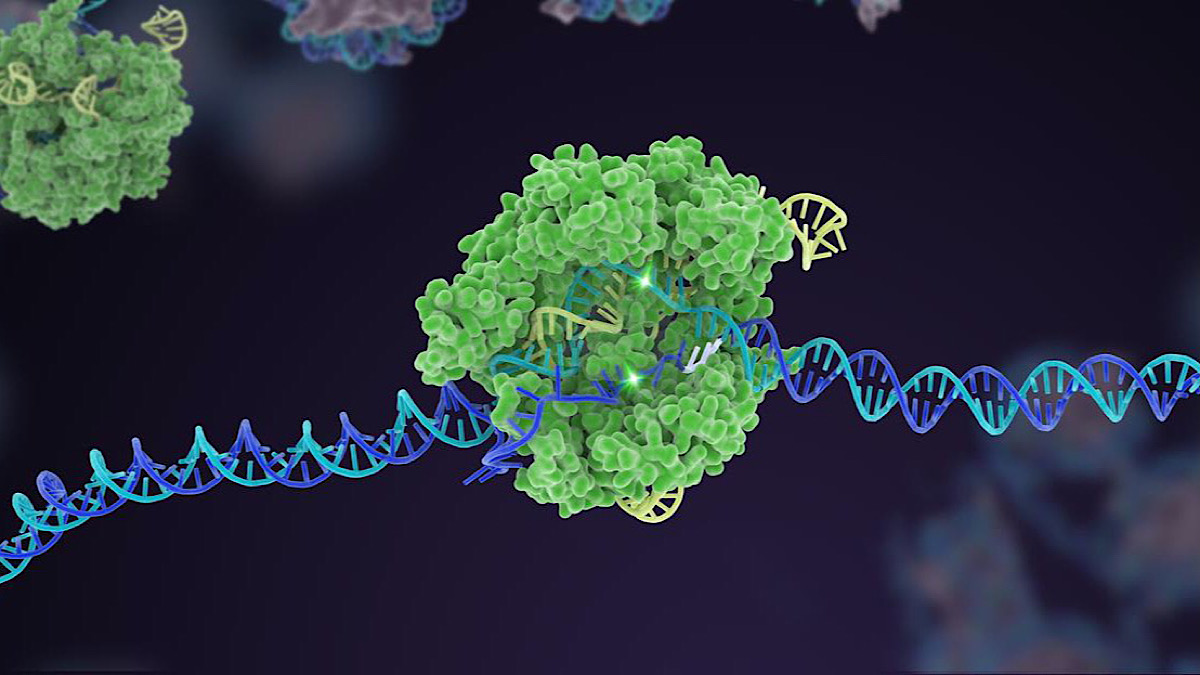Revolutionizing Gene Therapy: A More Accurate CRISPR-Based Approach

Table of Contents
Enhanced Targeting Specificity in CRISPR-Cas Systems
The accuracy of CRISPR-Cas systems is paramount for successful gene therapy. Off-target edits can lead to harmful consequences, hindering the therapeutic potential. Significant strides have been made to enhance the specificity of CRISPR-Cas systems, minimizing these unwanted effects.
Advanced Guide RNA Design
Guide RNA (gRNA) design plays a crucial role in determining the accuracy of CRISPR-Cas systems. Improvements in gRNA design have significantly reduced off-target effects.
-
Examples of improved gRNA design strategies:
- Truncated gRNAs: Shortening the gRNA length can improve specificity.
- Modified nucleotides: Incorporating modified nucleotides into the gRNA can enhance binding affinity and reduce off-target cleavage.
-
Computational tools for predicting and minimizing off-target sites: Sophisticated algorithms are now available to predict potential off-target sites and design gRNAs with minimal off-target activity. These tools analyze the genome sequence and identify gRNAs with high on-target specificity and low off-target potential.
-
Reducing the risk of unintended genetic alterations: These advancements in gRNA design lead to a significant reduction in the risk of unintended genetic alterations, making CRISPR-based gene therapy safer and more effective.
Engineered Cas Enzymes
Modifying the Cas enzyme itself is another strategy for improving CRISPR-Cas specificity. Researchers have engineered Cas enzymes with enhanced specificity, further minimizing off-target effects.
-
Examples of engineered Cas enzymes:
- Cas9 variants: Various Cas9 variants have been developed with improved specificity, such as eSpCas9(1.1) and high-fidelity Cas9 variants.
- Cas12a (Cpf1): Cas12a offers advantages in terms of smaller size and different target recognition mechanisms compared to Cas9.
- Cas13: This RNA-targeting enzyme offers possibilities for RNA-based gene editing.
-
Comparison of specificity and efficiency: While each engineered Cas enzyme possesses unique properties, improvements in specificity are consistently observed compared to wild-type Cas9. However, efficiency can vary depending on the target and the specific enzyme variant.
-
Mechanisms behind improved specificity: Engineered Cas enzymes often incorporate modifications that enhance the interaction between the enzyme and its target DNA sequence, increasing the stringency of binding and reducing the likelihood of off-target cleavage. This can involve alterations in the enzyme’s active site or the addition of domains that promote specificity.
Improved Delivery Methods for CRISPR-Based Gene Therapy
Efficient and targeted delivery of CRISPR components to the desired cells or tissues is critical for successful gene therapy. Advancements in both viral and non-viral delivery methods are enhancing the efficacy and safety of CRISPR-based therapies.
Viral Vectors
Viral vectors are commonly used for delivering CRISPR components due to their ability to efficiently transduce cells. However, improvements in viral vector technology are continually being made.
-
Types of viral vectors:
- Adeno-associated viruses (AAVs): AAVs are widely used due to their relatively low immunogenicity and ability to transduce a variety of cell types.
- Lentiviruses: Lentiviruses can efficiently transduce both dividing and non-dividing cells, making them suitable for various applications.
-
Advantages and disadvantages of each vector type: AAVs are generally safer but have a limited packaging capacity. Lentiviruses have a higher packaging capacity but may elicit a stronger immune response.
-
Modifications to enhance delivery: Engineered AAVs with modified capsids are being developed to target specific tissues or cell types more efficiently. This targeted delivery can improve the therapeutic index and reduce off-target effects.
Non-Viral Delivery Systems
Non-viral delivery systems offer an alternative to viral vectors, potentially avoiding some of the limitations and safety concerns associated with viral vectors.
-
Examples of non-viral delivery systems:
- Lipid nanoparticles: Lipid nanoparticles encapsulate CRISPR components, facilitating their delivery into cells.
- Electroporation: This technique uses electrical pulses to create temporary pores in cell membranes, allowing CRISPR components to enter the cells.
-
Comparison of efficiency and safety profiles: While non-viral methods generally have lower efficiency compared to viral vectors, they offer advantages in terms of safety and scalability.
-
Potential for overcoming limitations of viral delivery: Non-viral delivery systems are continuously being optimized to enhance their efficiency and broaden their applications in CRISPR-based gene therapy.
Addressing Ethical Concerns and Future Directions of CRISPR-Based Gene Therapy
The transformative potential of CRISPR-based gene therapy is accompanied by significant ethical considerations that must be addressed. Responsible research practices and regulatory frameworks are essential for guiding the safe and ethical application of this technology.
Ethical Considerations
The power of CRISPR-Cas technology necessitates careful consideration of ethical implications.
-
Responsible research practices and regulatory frameworks: Strict guidelines and regulatory oversight are crucial to ensure responsible research and development, minimizing risks and maximizing benefits. These frameworks need to address issues such as informed consent and data privacy.
-
Addressing potential societal impacts and equitable access: The accessibility and affordability of CRISPR-based therapies need to be carefully considered to prevent disparities in access to treatment. Equitable distribution of benefits is a critical aspect of responsible implementation.
-
Importance of ethical guidelines and public discourse: Open and transparent public dialogue is vital to establish ethical standards and build public trust in the responsible development and application of CRISPR technology.
Future Research and Development
The field of CRISPR-based gene therapy is rapidly evolving, with ongoing research exploring new and improved techniques.
-
Potential applications in treating various diseases: CRISPR-based gene therapy holds promise for treating a wide range of diseases, including genetic disorders, cancer, and infectious diseases.
-
Focus on advancements improving efficacy, safety, and accessibility: Ongoing research focuses on enhancing the precision, efficiency, and safety of CRISPR-based therapies, while also striving to make these treatments more accessible and affordable.
-
Base editing, prime editing, and other emerging technologies: New gene editing technologies, such as base editing and prime editing, offer even greater precision and versatility, promising further advancements in the field.
Conclusion
CRISPR-based gene therapy represents a significant advancement in the fight against genetic diseases. The improvements in targeting specificity, delivery methods, and our understanding of ethical considerations pave the way for a more precise and effective approach. While challenges remain, ongoing research and development hold immense promise for the future of medicine. The enhanced accuracy of CRISPR-based gene therapy offers a beacon of hope for countless individuals affected by genetic disorders. To learn more about the latest advancements in this exciting field and how it is shaping the future of healthcare, continue exploring resources on CRISPR-based gene therapy and its potential to revolutionize medical treatment.

Featured Posts
-
 Texas Health Officials Address Separate Measles Case Surge
May 30, 2025
Texas Health Officials Address Separate Measles Case Surge
May 30, 2025 -
 Dhkra Alastqlal Ahtfal Balinjazat Alwtnyt
May 30, 2025
Dhkra Alastqlal Ahtfal Balinjazat Alwtnyt
May 30, 2025 -
 Responding To The 311 Heatwave Deaths In England Lessons Learned And Future Preparedness
May 30, 2025
Responding To The 311 Heatwave Deaths In England Lessons Learned And Future Preparedness
May 30, 2025 -
 Ticketmaster Como Virtual Venue Esta Cambiando La Compra De Boletos
May 30, 2025
Ticketmaster Como Virtual Venue Esta Cambiando La Compra De Boletos
May 30, 2025 -
 Gorillaz Celebrate 25 Years A Retrospective Exhibition And Live Performances
May 30, 2025
Gorillaz Celebrate 25 Years A Retrospective Exhibition And Live Performances
May 30, 2025
